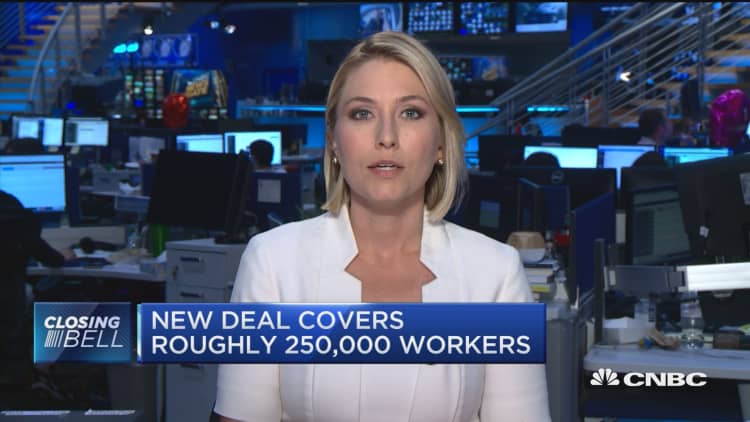Bloomberg | Bloomberg | Getty Images
The “summer of strikes” needs a new name — there is no sign of a slowdown in workers walking off the job.
Some 362,000 workers have gone on strike so far in 2023, compared with 36,600 over the same period two years ago, according to data by Johnnie Kallas, a Ph.D. candidate at Cornell University’s School of Industrial and Labor Relations, and the project director of the ILR Labor Action Tracker.
“We have found that many workers are increasingly frustrated with decadeslong rising income inequality,” Kallas said.
If the United Auto Workers‘ work stoppages expand to include most, or all, of the 150,000 workers who could strike, “then 2023 could end up being the highest since 1986,” Kallas said.
Employees who withhold their labor can face a number of consequences, including losing their job and health insurance, experts said. As a result, they should learn what protections may be available to them.
“Strikes are a powerful tool for exercising power, but because our labor law is so weak it comes with great risk for workers,” Sharon Block, a professor at Harvard Law School and the executive director of the Center for Labor and a Just Economy, said in a previous interview with CNBC.
Here’s what to know.
Many, but not all, workers have the right to strike
The National Labor Relations Act of 1935 codified the right to strike into law. As a result, all workers covered by the NLRA can participate in lawful strikes, Block said.
What is a lawful strike?
The National Labor Relations Board defines two classes of lawful strikers: those protesting unfair labor practices at their workplace and those who are fighting its economic conditions.
“If workers are standing together in a strike for better wages and working conditions, they should feel confident that their strike is protected,” Block said.
That includes workers who are not in unions, she added, “as long as they act collectively.”
That last part is important.
“Strikes have to be ‘collective action’ to be protected,” Kenneth Dau-Schmidt, a law professor at Indiana University Bloomington, told CNBC earlier this year. “Generally, that means you have to do it as a group.”
Two people can constitute a group, he said, but “the larger, the better.”
Even then, there are exceptions.
Those in the private sector covered by the Railway Labor Act, which includes most railway and airline employees, are subject to that law rather than the NLRA.
“Workers covered by the Railway Labor Act are also allowed to…
Click Here to Read the Full Original Article at Top News and Analysis (pro)…


